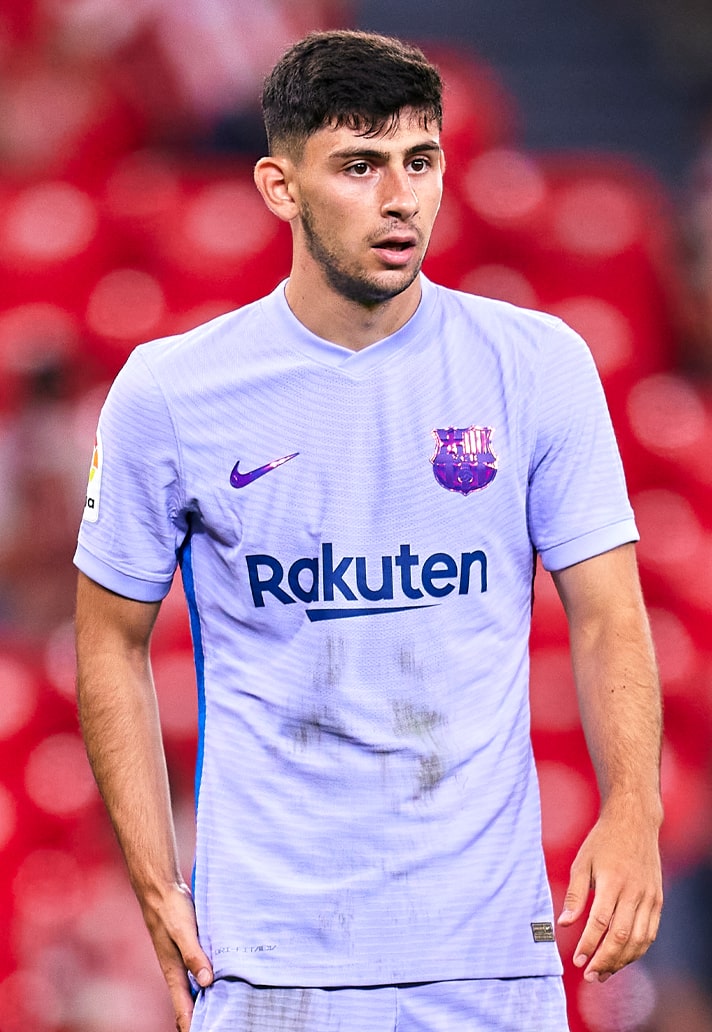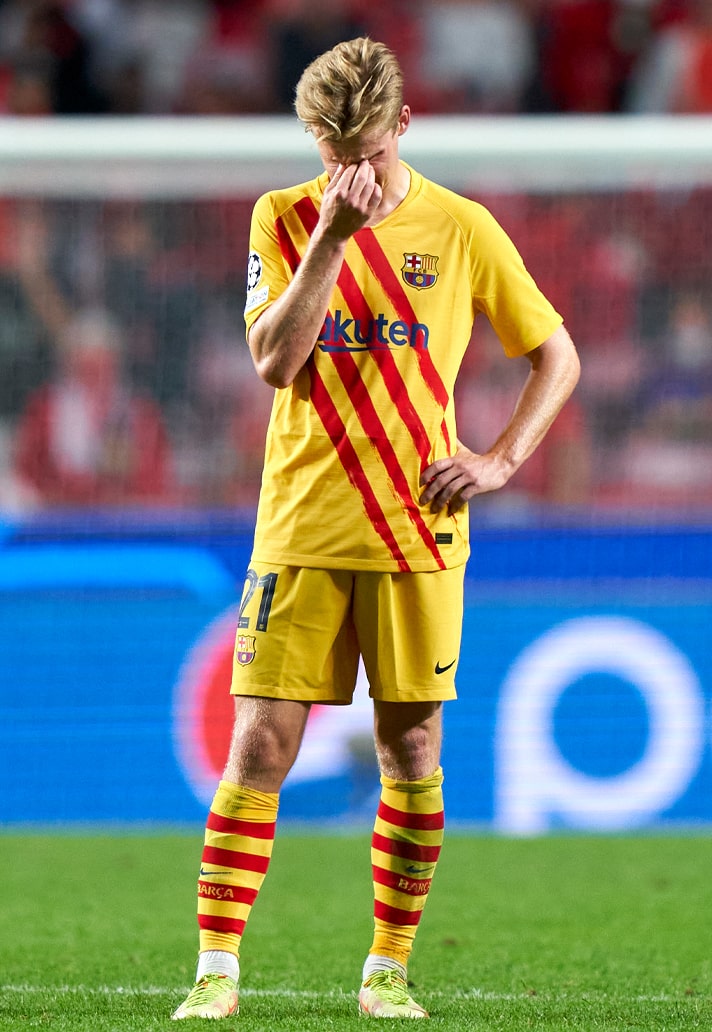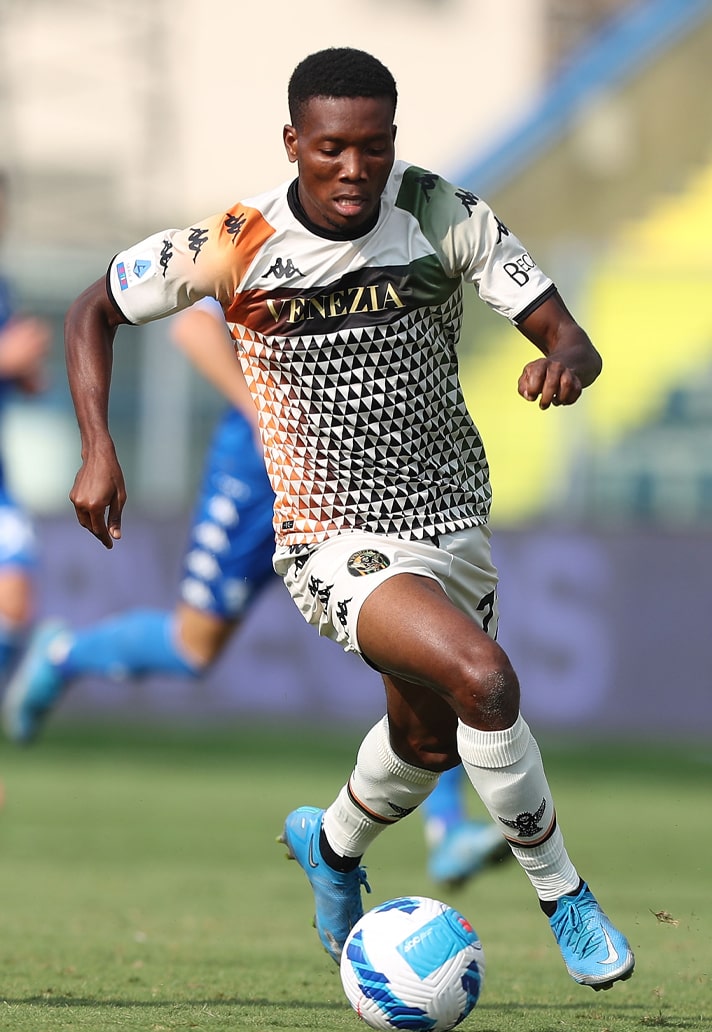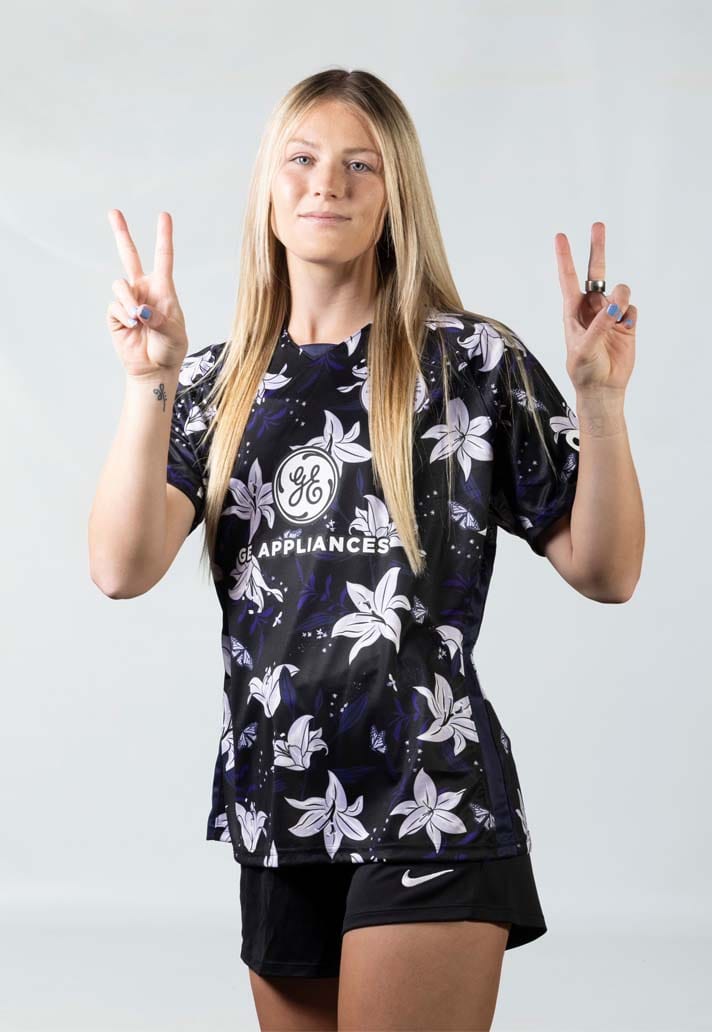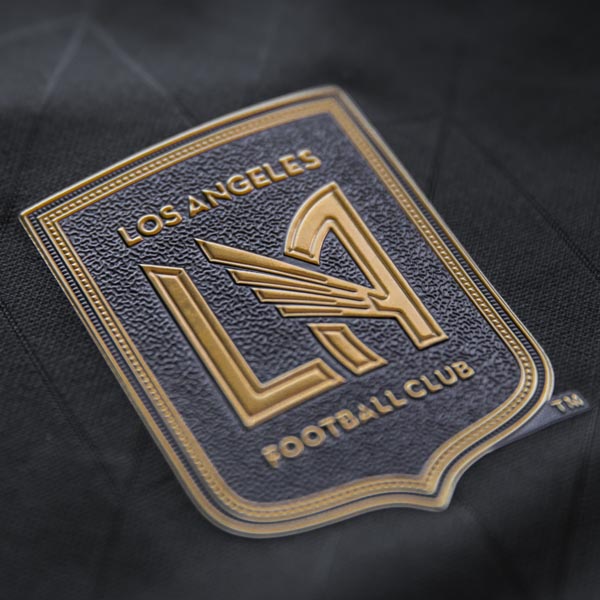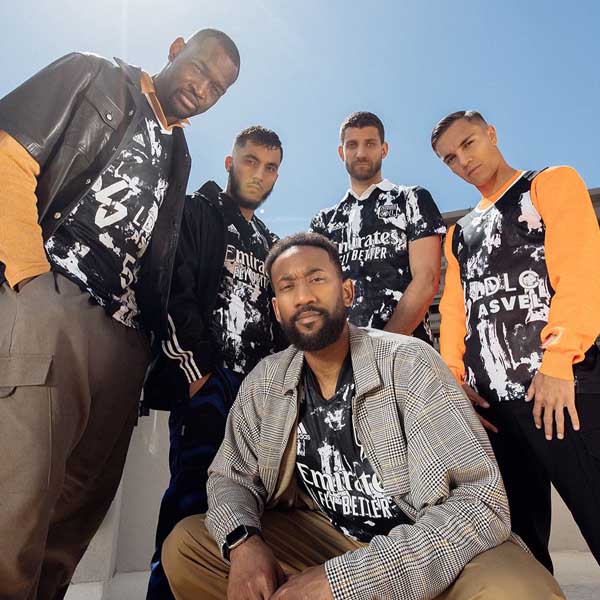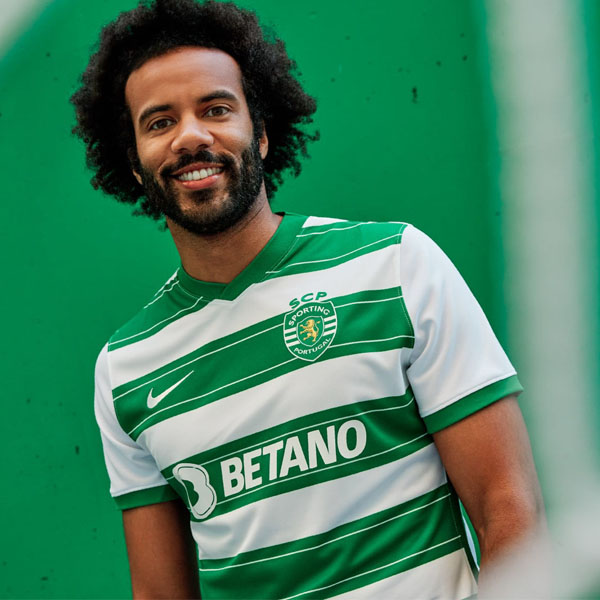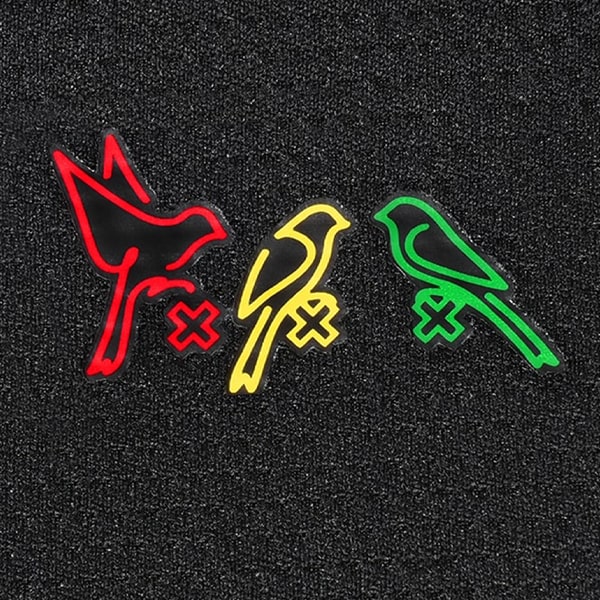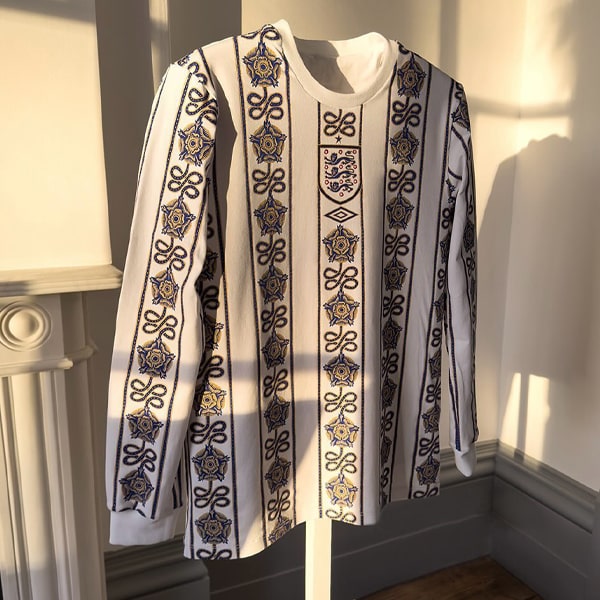The 21/22 season has not only been one of the best for new shirt designs, it’s also seen more ‘running alterations’ made to adhere to regulations than ever before, often affecting what are some of the best shirts out there. Clearly this is no coincidence, so is it time that the rules and regs are adjusted to enable a greater freedom of design?
Those watching the Champions league match between Inter Milan and Shaktar Donetsk this week will have noticed that the Serie A side’s Nike kit looked a bit different to what was revealed back in July and that has since been on display in Serie A. What was once a bespoke beauty, with that ‘Biscione’ – the snake that represents the club – wrapping around the body, was now reduced to a bland white base with not a blue scale in sight, all because it supposedly contravened the UEFA Equipment Regulations.
Those regulations state the following: “The choice of pattern is unrestricted with the following exceptions (to be assessed at the sole discretion of the UEFA administration): The pattern must be non-pictorial, e.g. it must not contain any images, illustrations or any other symbols (any pattern that does not satisfy this requirement will be considered as a decorative element); The pattern must not allow a reasonable person to identify a manufacturer or sponsor relevant to the equipment (any pattern than does not satisfy this requirement will be considered a trademark).”
It’s a move that fundamentally alters not only the presentation of the kit, but also the story that runs through Inter’s 21/22 setup. But the Nerazzurri are not alone in falling foul of the strict kit regulations this season.
It’s no secret that Barcelona are currently struggling, and the last thing they need on their plate is any issues with their kits – but it looks like that’s what they might have with their current away shirt. The monochromatic crest contains a shimmering iridescence, but, as per Article 8.04 of the official UEFA Equipment Regulations, material that is reflective or changes its colour under any external influence (pressure, light, water, etc.) is forbidden. While it’s not been officially confirmed as an issue just yet, Barca played out their humbling 3-0 defeat to Benfica in the Champions League in the ‘Senyera’ kit from the 19/20 season, which was not even registered with UEFA at the start of this season. Surely there’s more to this than just a kit clash…
And it’s not just Nike designs that are encountering restrictions. Both the number one and number two kits on our Top 20 Shirts of the 21/22 Season have also had to be amended for competition.
Venezia kicked off their partnership with Kappa in the most superb fashion, with not one, not two, but all three of their current kits making our aforementioned list. Kappa, along with New York creative agency Fly Nowhere, managed to bend convention to produce the fresh designs that met almost universal approval. But the outstanding designs have since hit a snag in Serie A.
Newly promoted to Italy’s top tier, Venezia arrived with a ready-built reputation for having some of the best bespoke kits in the game over the last few years, often centred around the appearance of the word ‘Venezia’ in place of a standard sponsor logo. It’s a move that instantly elevates the designs, and Kappa and Fly Nowhere were able to leverage it to perfection. But what was OK in the lower Italian leagues apparently doesn’t necessarily get a pass in the Serie A.
The league allows only "one club logo" on a football shirt. With the Venezia text on the front considered a club logo, it meant that the Venetians had to play in shirts without the club’s lion or crest in the first three rounds of the season, in line with Article 5, Paragraph 1, of the Regolamento Divise da Gioco, the league’s regulations on match kits.
The club tried to get around this by saying that the “Venezia” text refers to the city and not the club, emphasising the fact by applying an updated version of the "Venezia" script, with the Venezia 1600 logo — the official mark of the city's celebration of its 1600th anniversary this year — embedded into the script, and in turn returned the club crest to the match shirts as well. They then wore their kit as it was intended on the fourth match day, when they faced Spezia. However, in what appears to be the final instalment in that ongoing saga, Serie A informed the club that they remain in violation of Article 5 of the league's kit regulations. They will therefore have to play the rest of the season without their crest, removing an integral part of the shirts design.
Ajax have also encountered similar issues, with two of their kits needing amendments this season. Firstly, their Bob Marley-inspired third shirt for European competition had to be changed, the three little birds that usually appear on the back under the collar needing to be removed, with UEFA stating: “The European Football Association sees it as a different expression than the club logo, logo clothing sponsor, or sleeve sponsor. Other expressions are not allowed.”
Then their home shirt, which removed player names in a nod to historic kits, had to feature player names for the Champions League, despite it being OK in the Eredivisie. Further to this, their numbers had to have a black border, while the three stars on the base of the neck also had to be amended to three crosses. All minor details, but equally, restrictions that necessitate the amendment of the original design and the meaning behind it.
While the thirst for football culture continues to grow, with other industries more eager than ever to cross borders with the beautiful game, which in turn serves to increase its appeal beyond that of simple football fans and ensuring that its reach is greater than it has ever been, there remain what seem to be outdated rules and regulations that hold the world of design back.
A football shirt in its essence remains the key identifier of a team; it’s the armour that a tribe wears into battle. The world of shirt design is rapidly evolving to not only deliver on this level, but to also offer so much more. Designers are becoming more adventurous than ever, giving us some of the best shirts we’ve ever seen, evolving the very nature of jersey culture and opening up the avenues in which a football shirt can now acceptably be seen. But as it pushes to defy conventions and expand beyond mere traditions, it’s now starting to hit boundaries and restrictions that can’t simply be overcome.
Designers will always have natural restrictions that come from the traditions of a club – a Liverpool or Manchester United home shirt, for example, will always have to be predominantly red. But PUMA have shown this season that even the standard setup of a shirt that we’re used to does not necessarily have to be adhered to – although if those conventions are to be played with then careful consideration has to be made. The very idea of exploring what a football shirt has to be is one that should be applauded though – with any progress there will always be a series of trial and error; Designers should be free to experiment, albeit with the fans views always at the forefront of their thoughts. Instead though, they have to contend with rules and regulations from the governing bodies of whatever competitions the clubs are competing in. That in itself can be a headache, for what is acceptable in one competition may not be in another.
So is it time to rethink the rules, to refresh the regulations, and possibly bring in a uniform (excuse the pun) set that cover all competitions? It’s absolutely fair enough that a football kit should not be carrying a political message, but are three birds on the back of the neck really a problem? Yet it’s these little flourishes that can truly enrich a design.
The simple fact is that the evolution of Jersey Culture has shifted the parameters upon which a shirt is designed, and the rules and regulations have to equally evolve to allow this, otherwise we will have to accept that football shirts will not be able to progress, and instead the world of jersey design will stagnate, stalling the progress and influence of the game across other industries and cultures.
More freedom will naturally lead to greater designs, but this can only come if there’s a fresh outlook on what a football shirt both is, and needs to be. Here’s to removing the shackles and seeing what’s really possible.
Shop all 21/22 replica at prodirectsoccer.com

